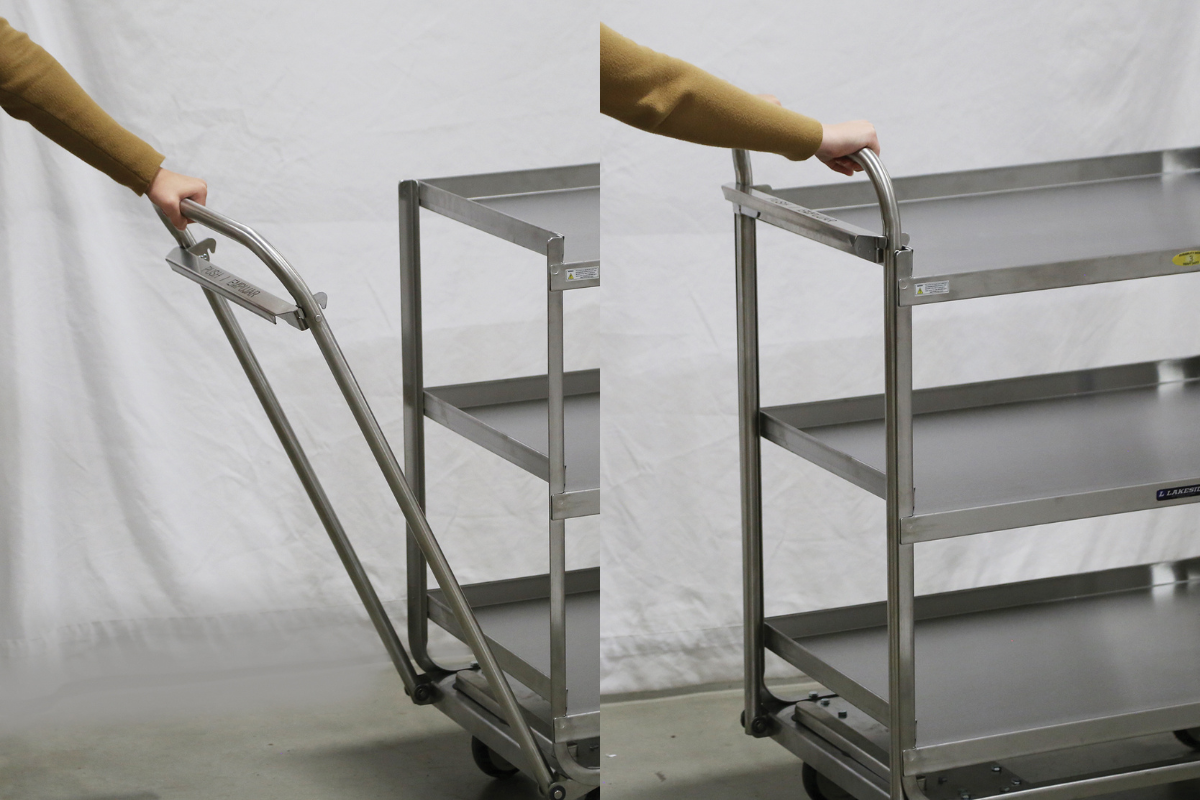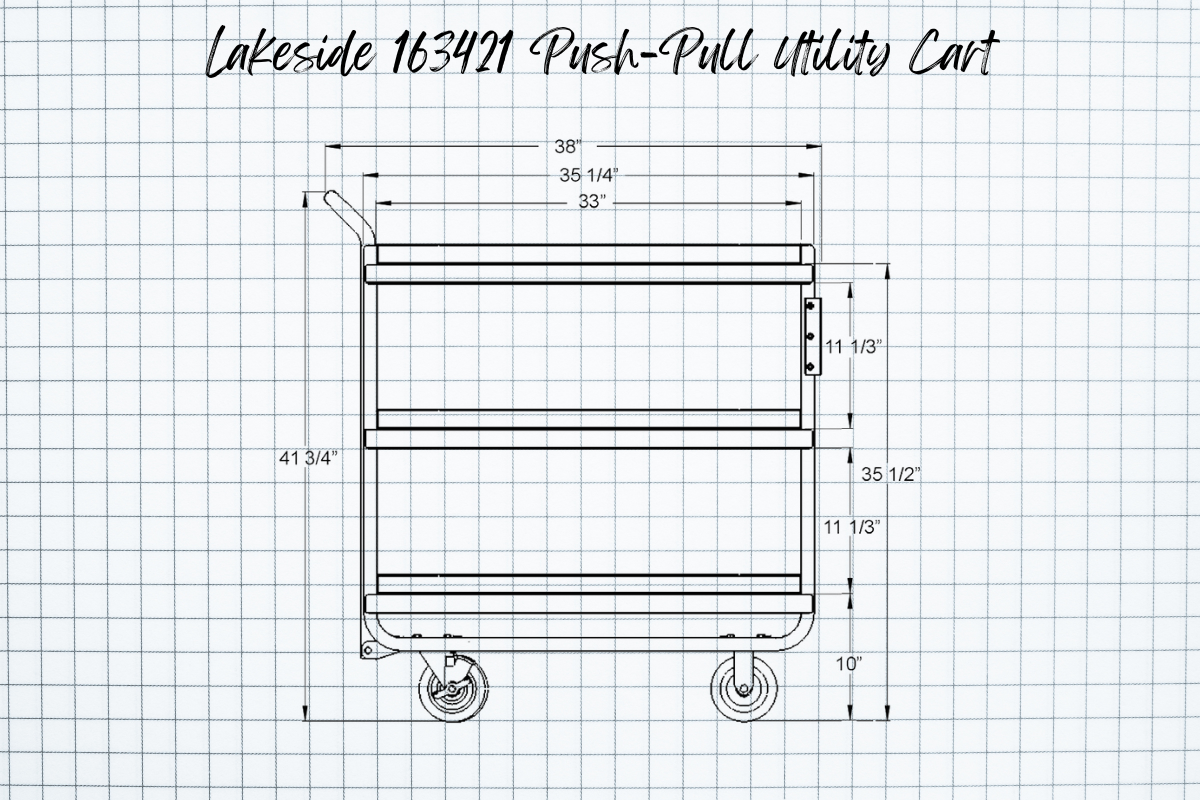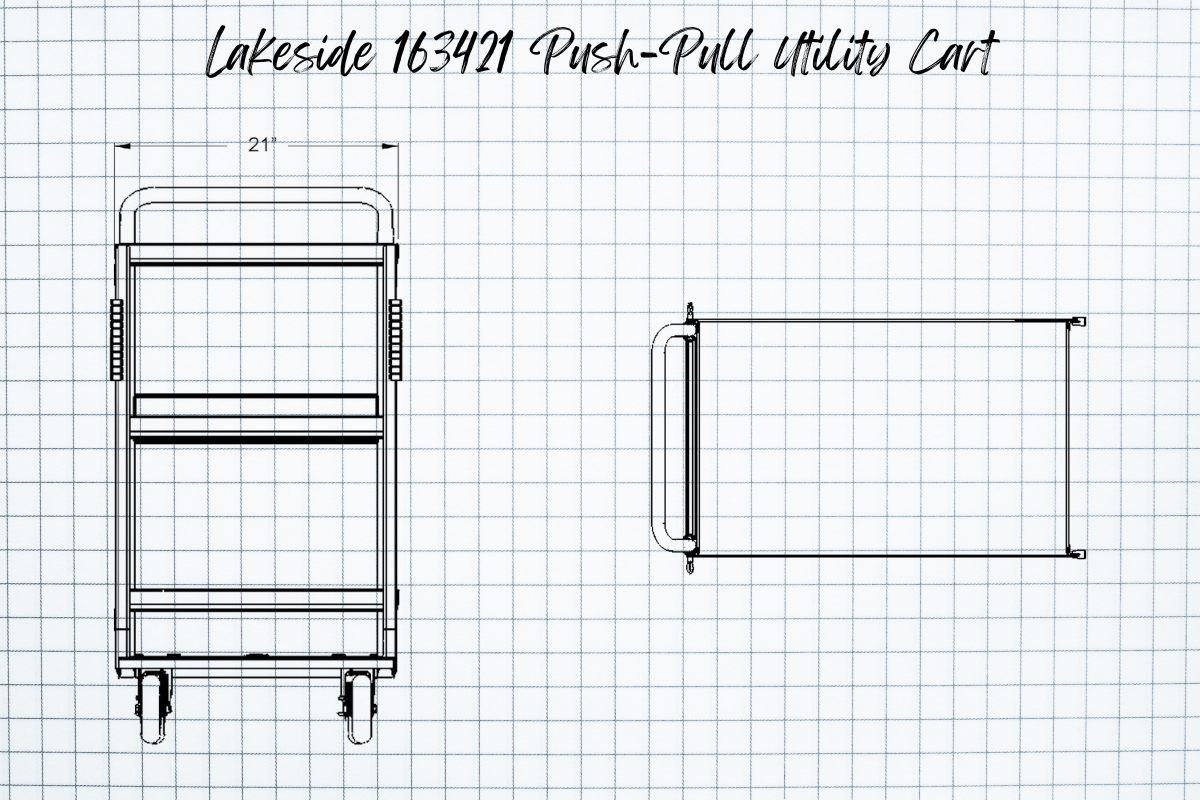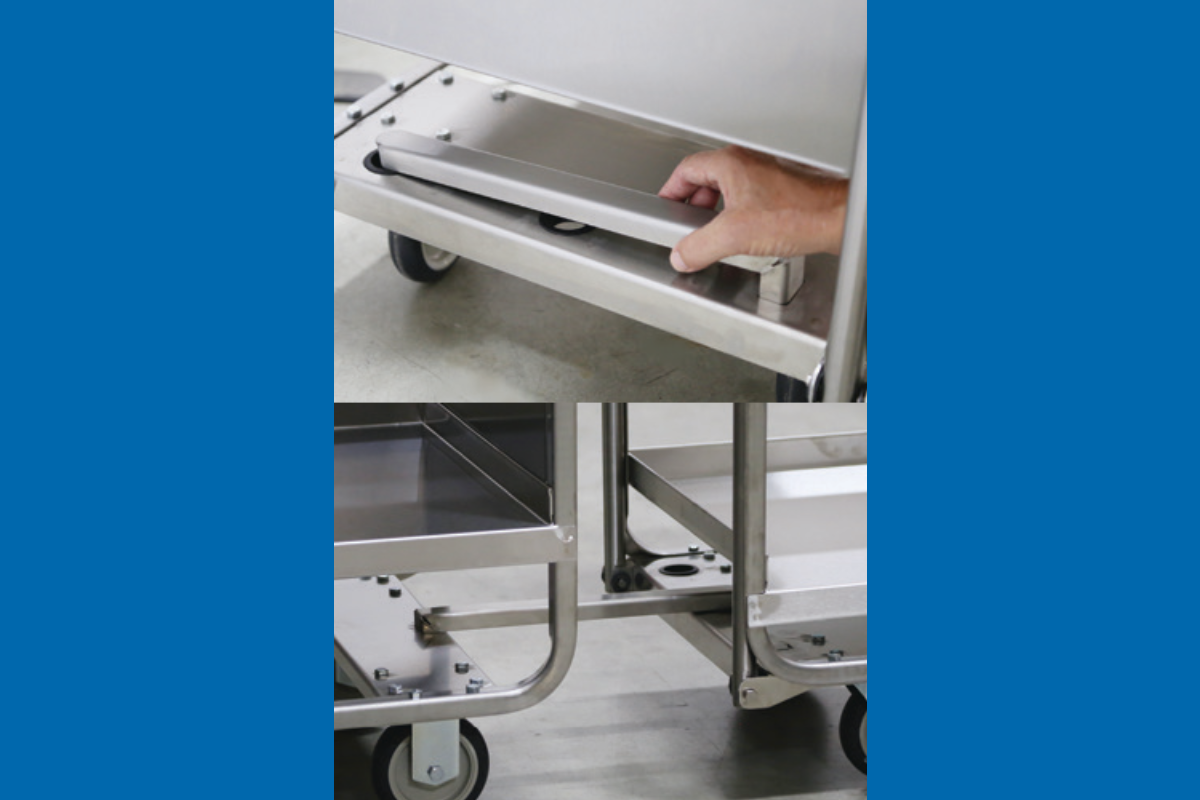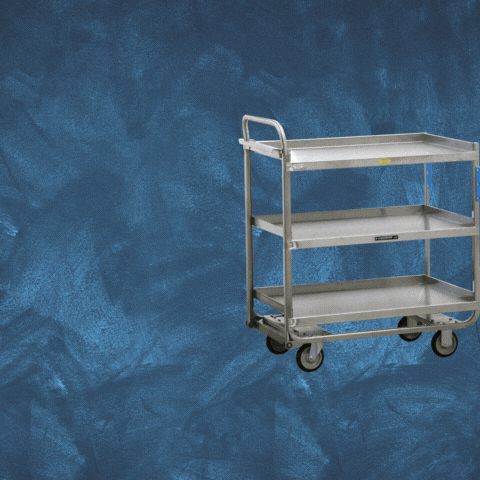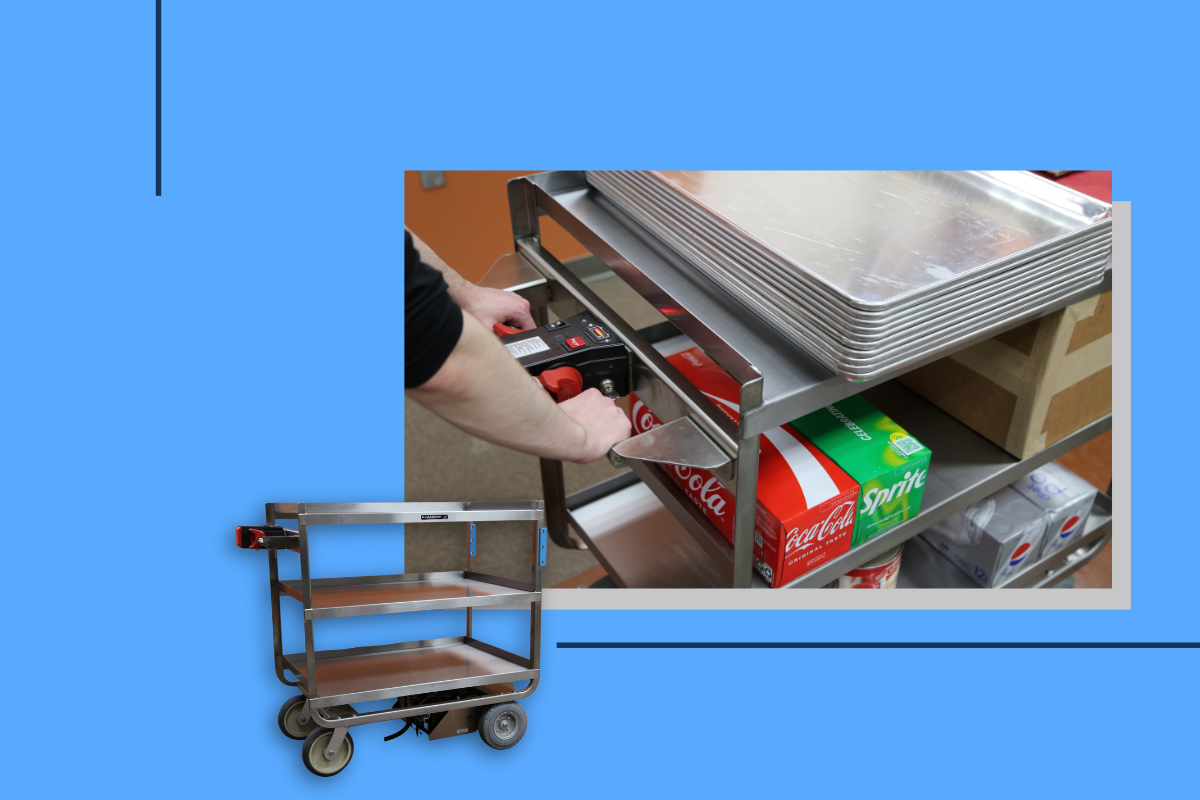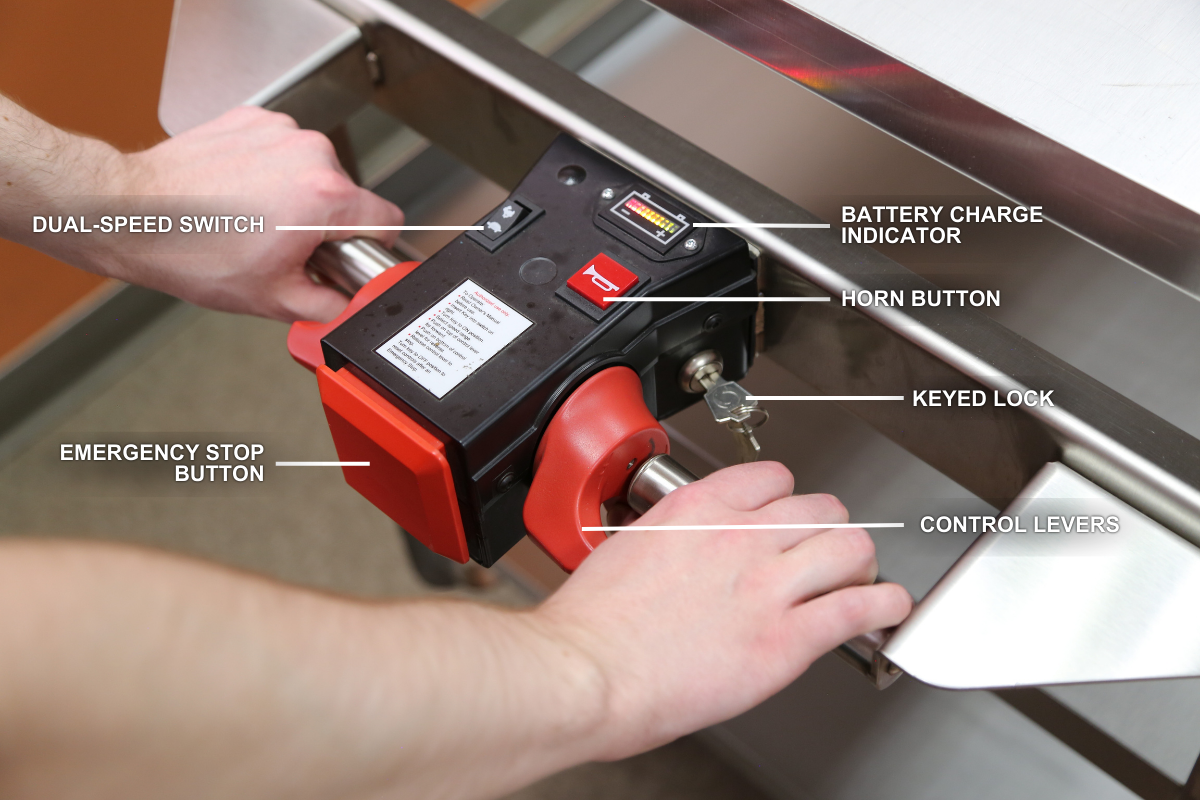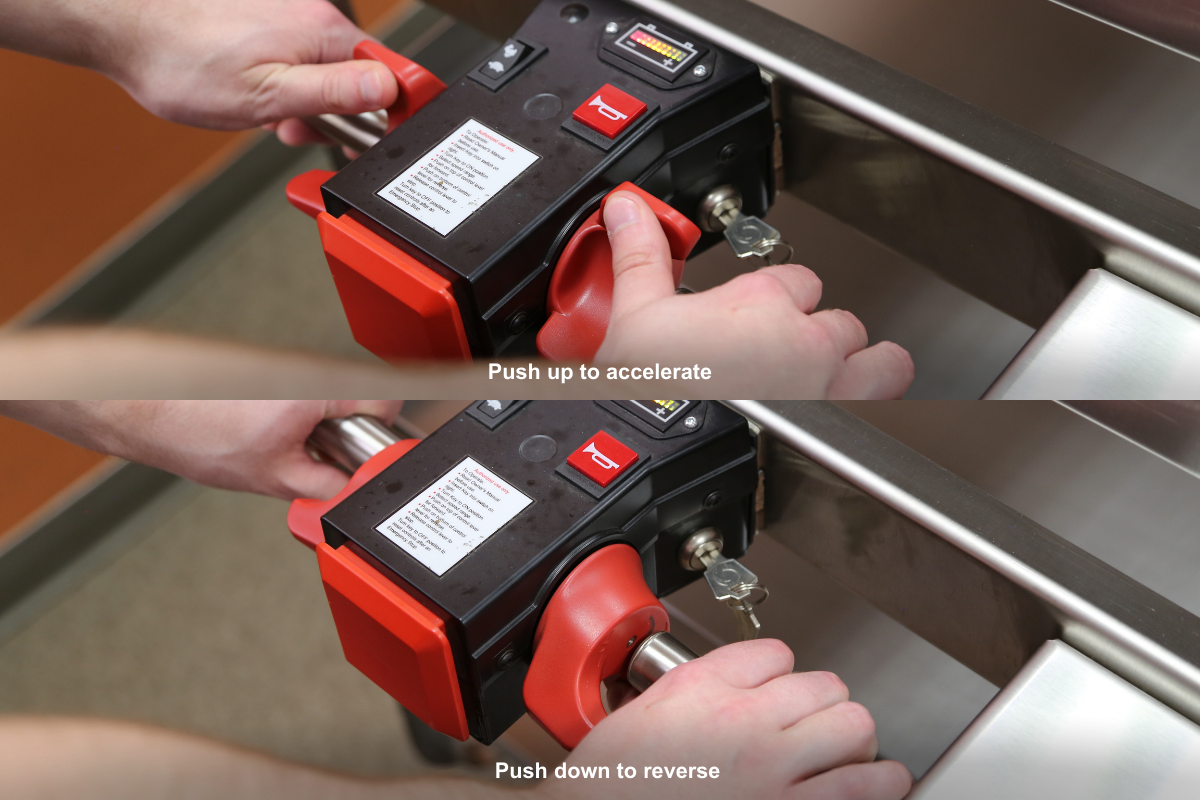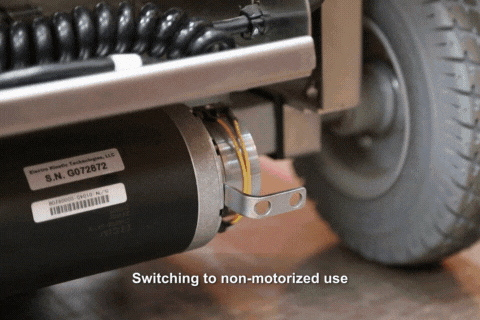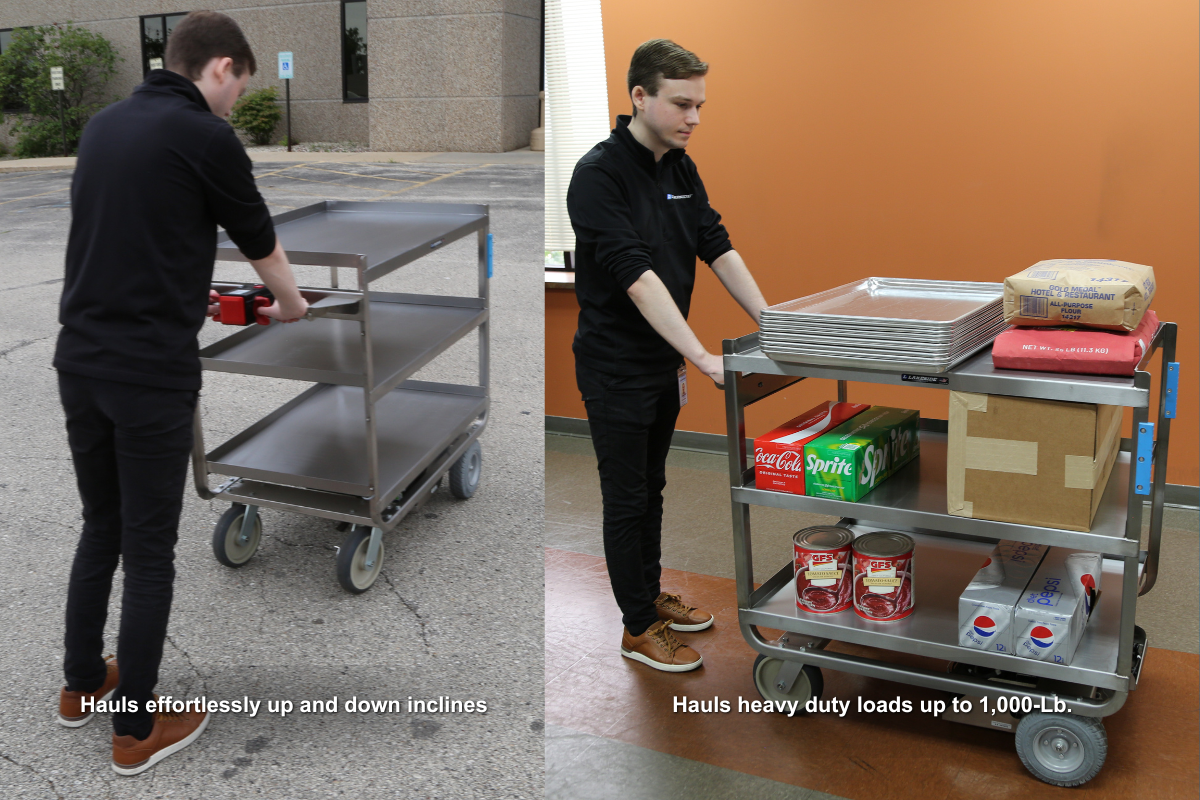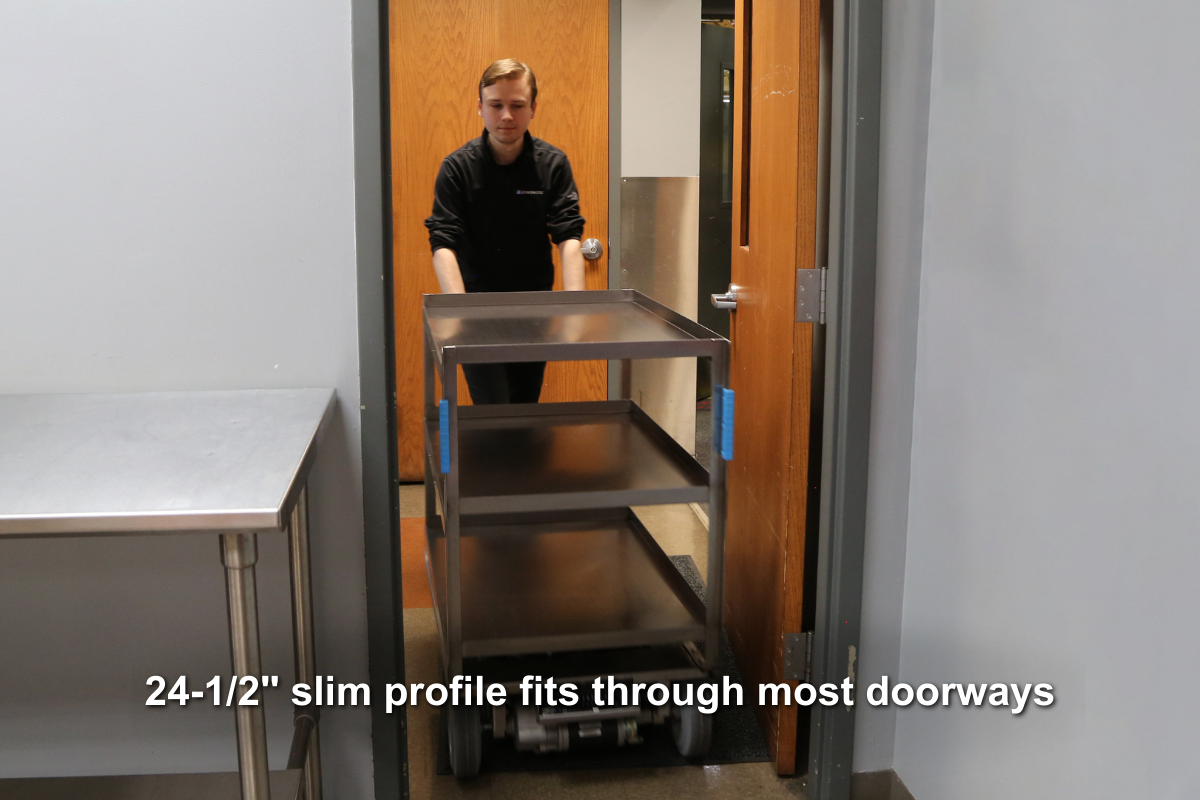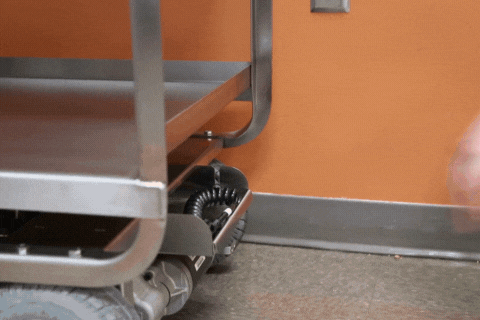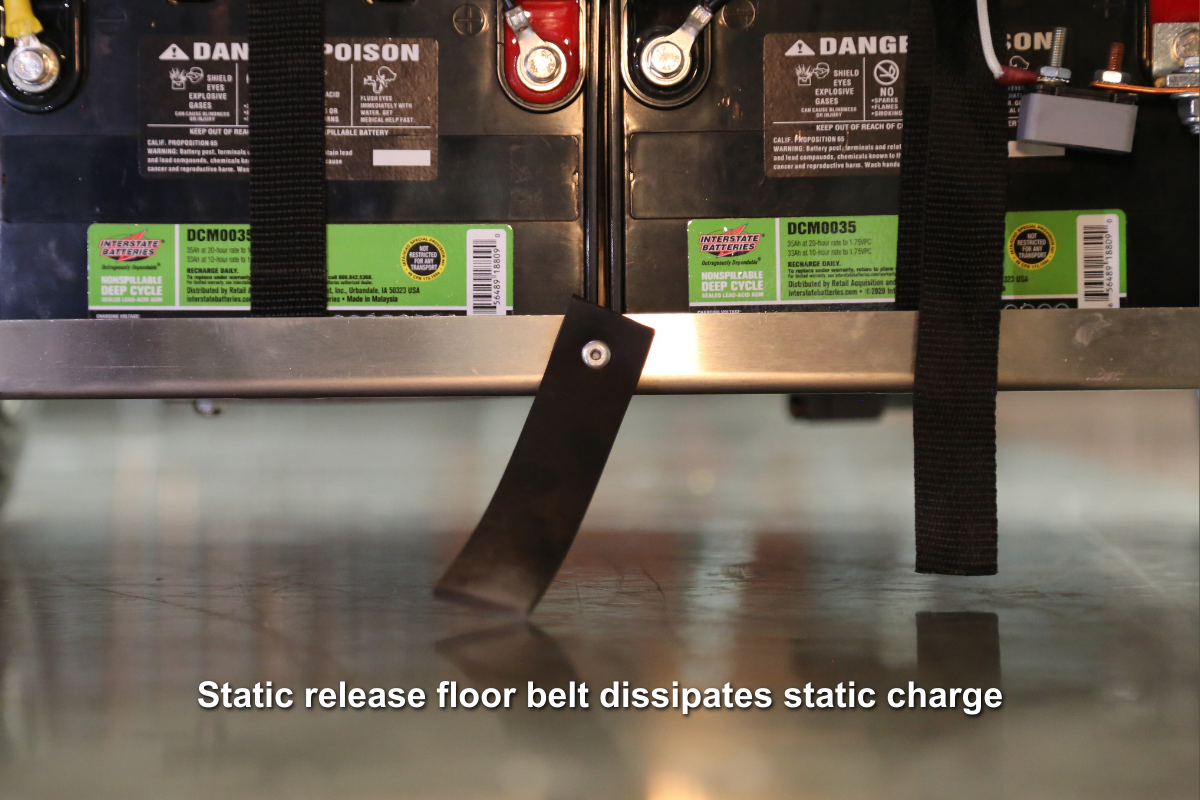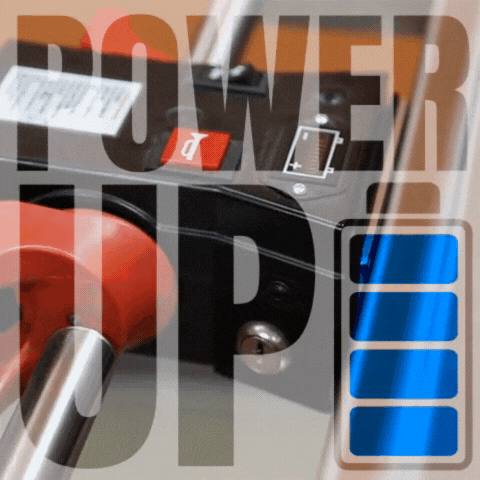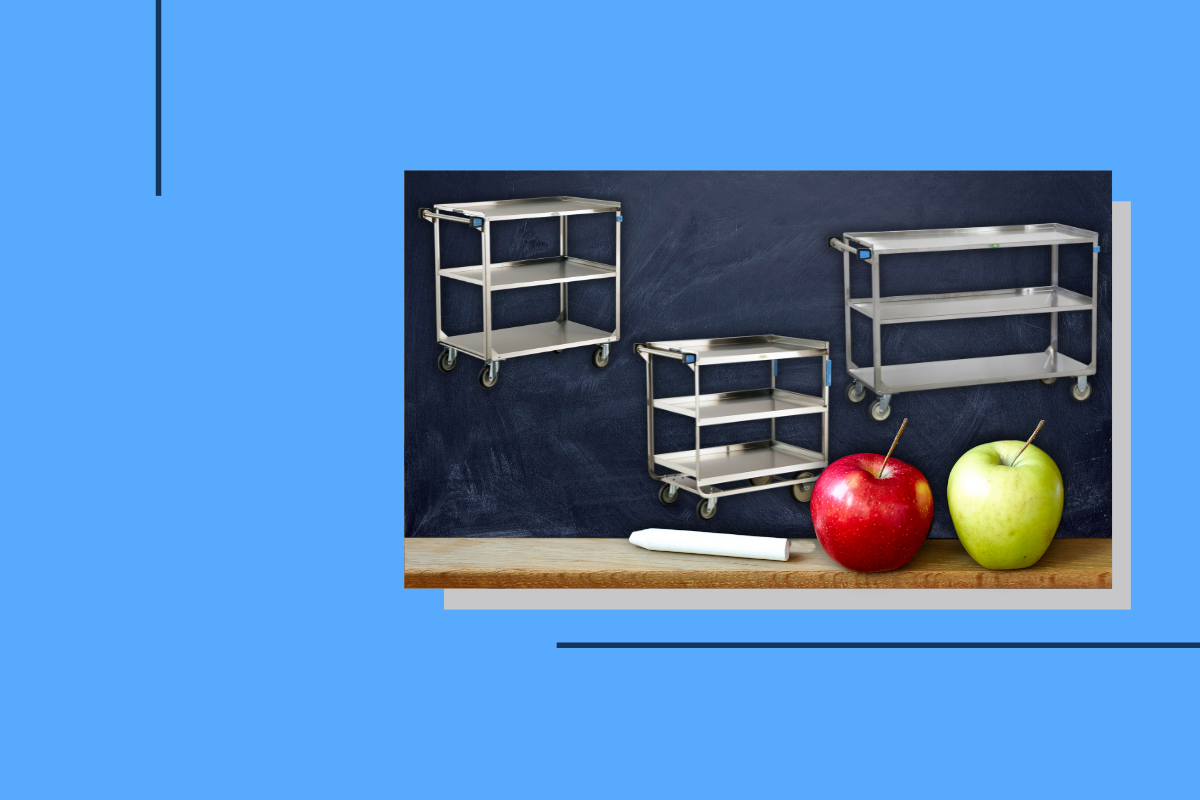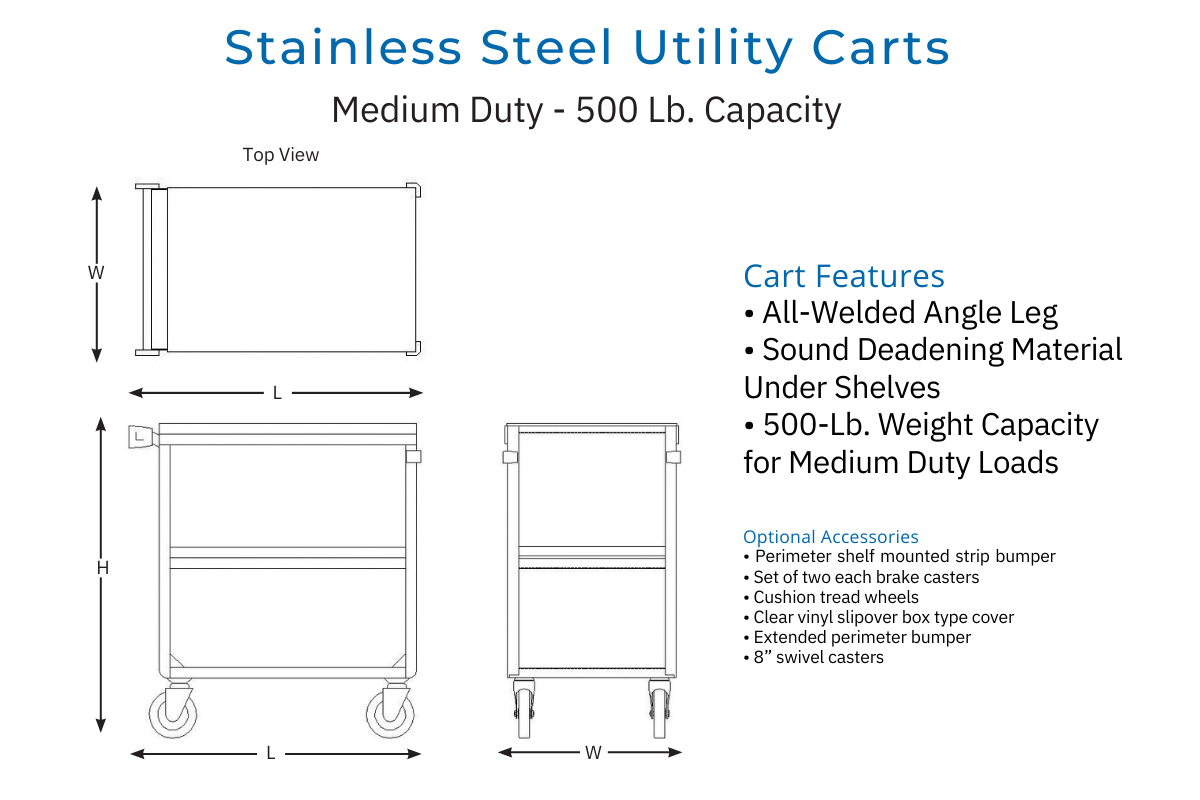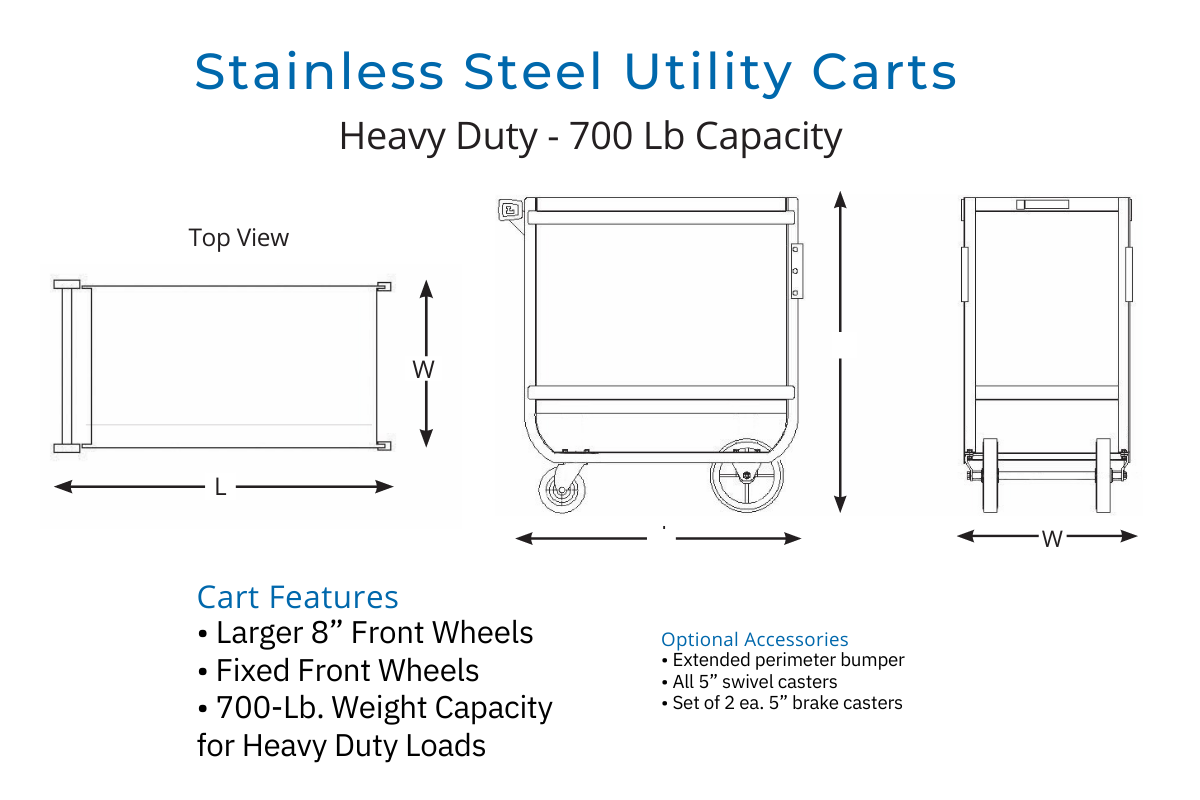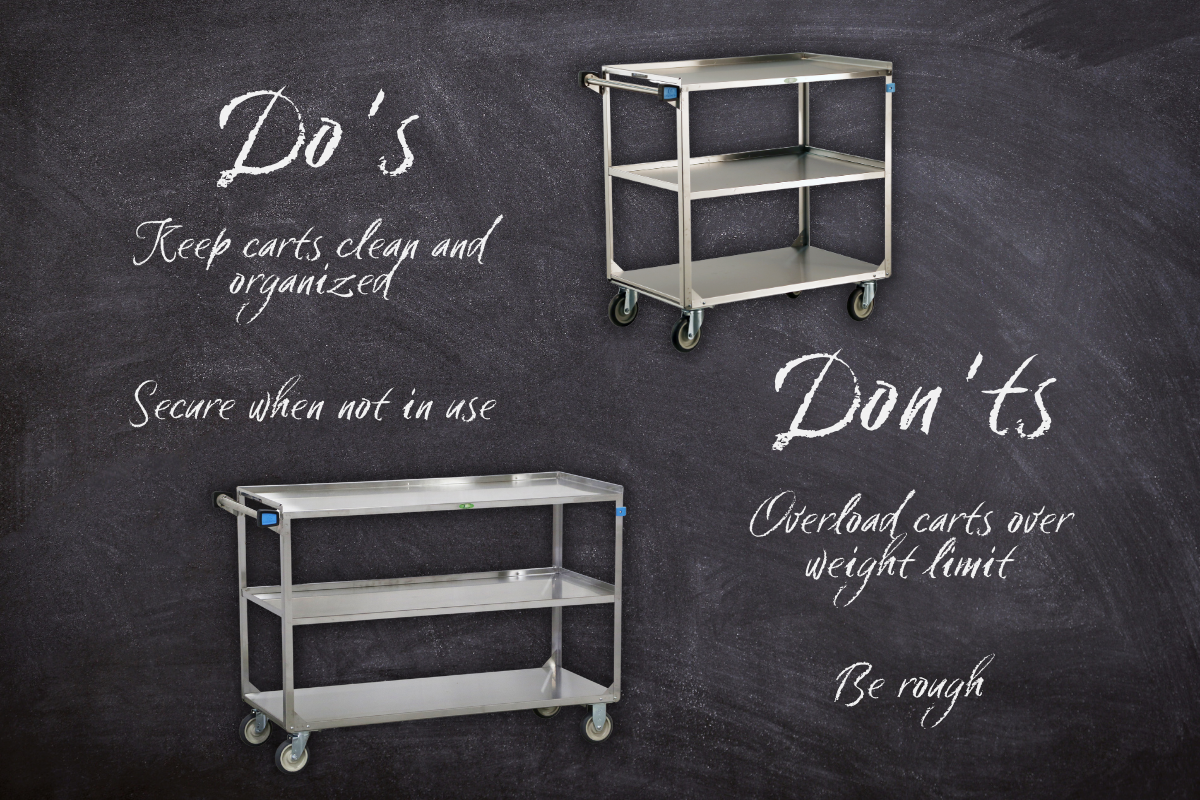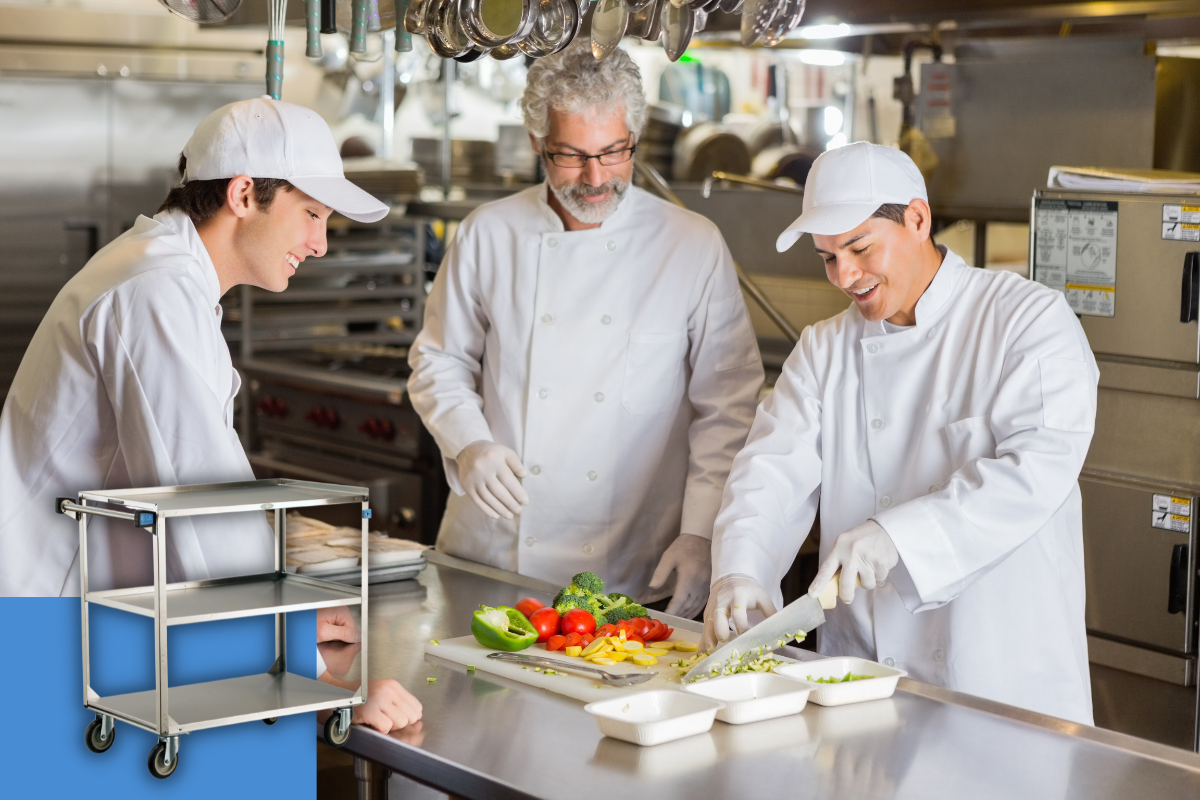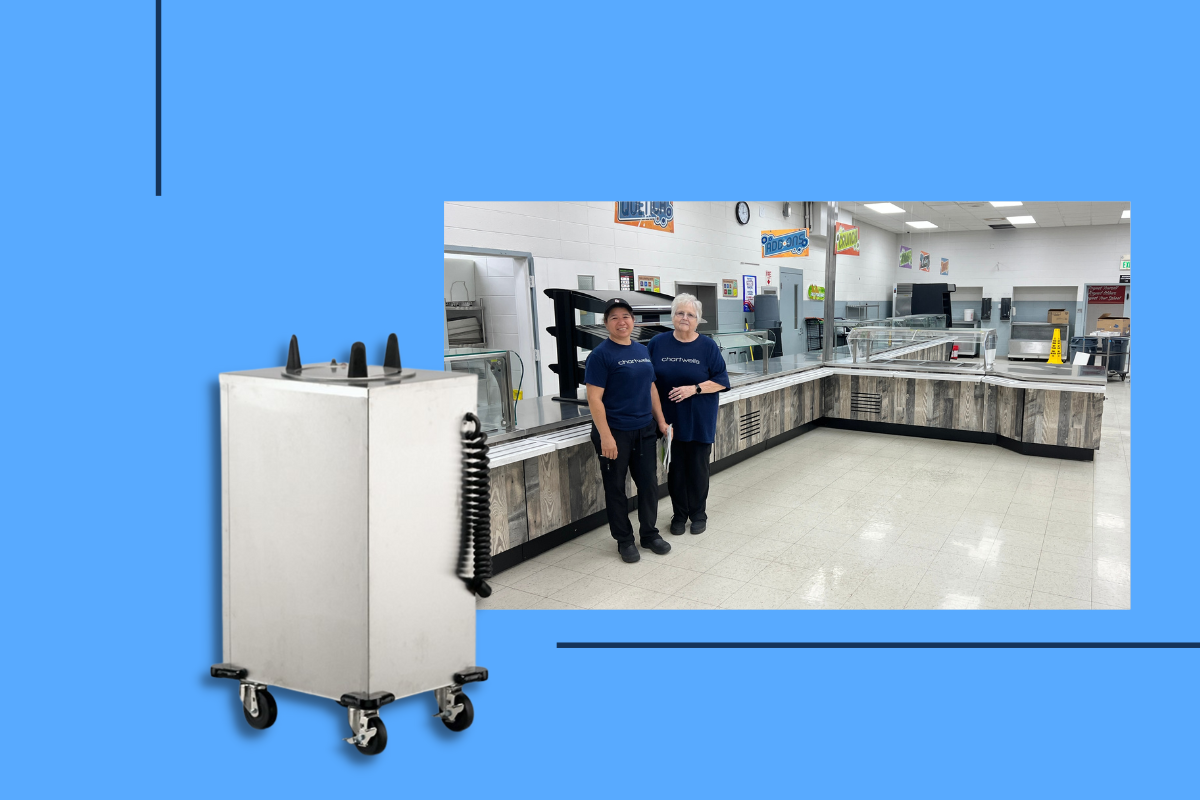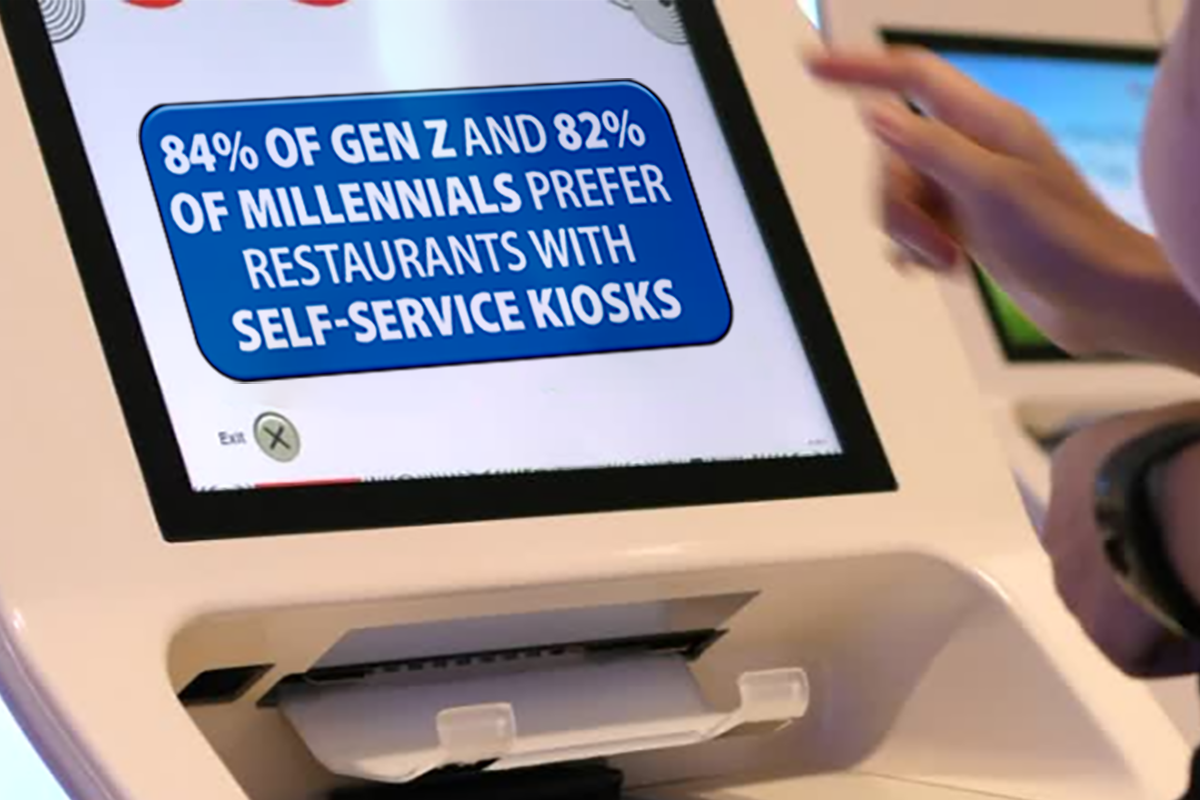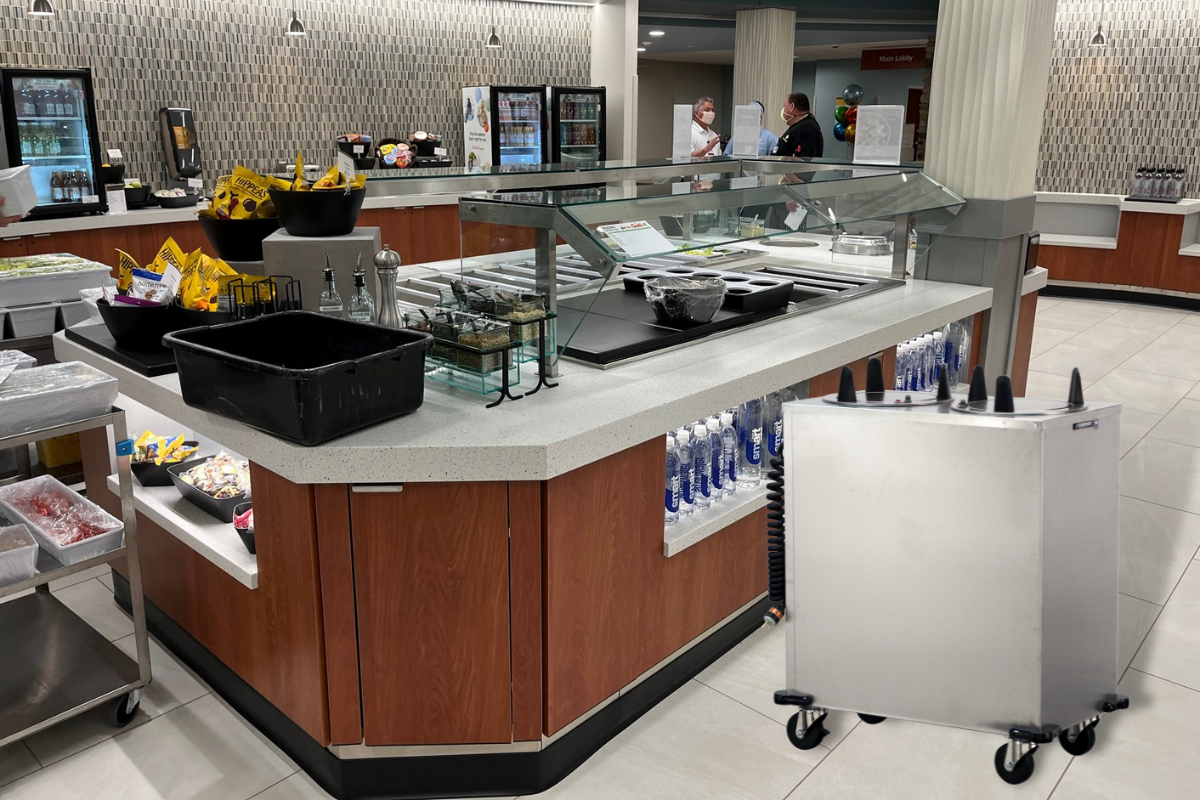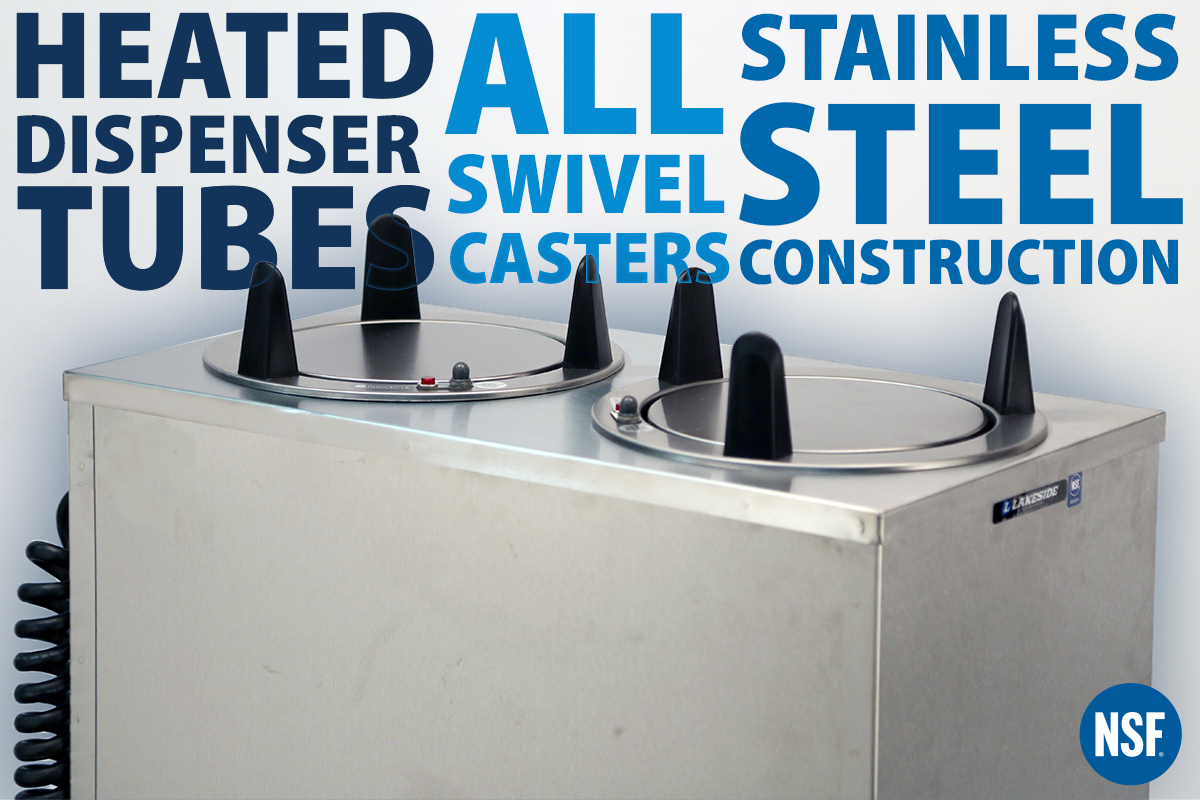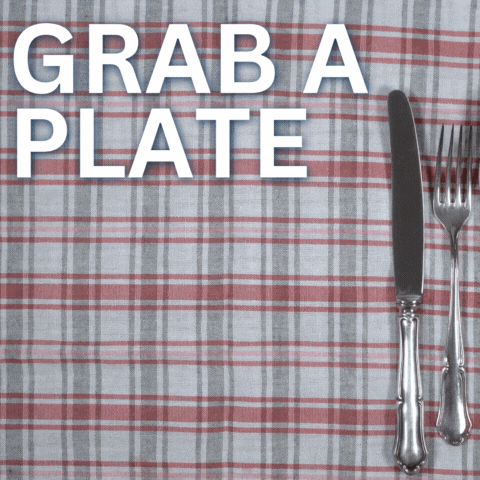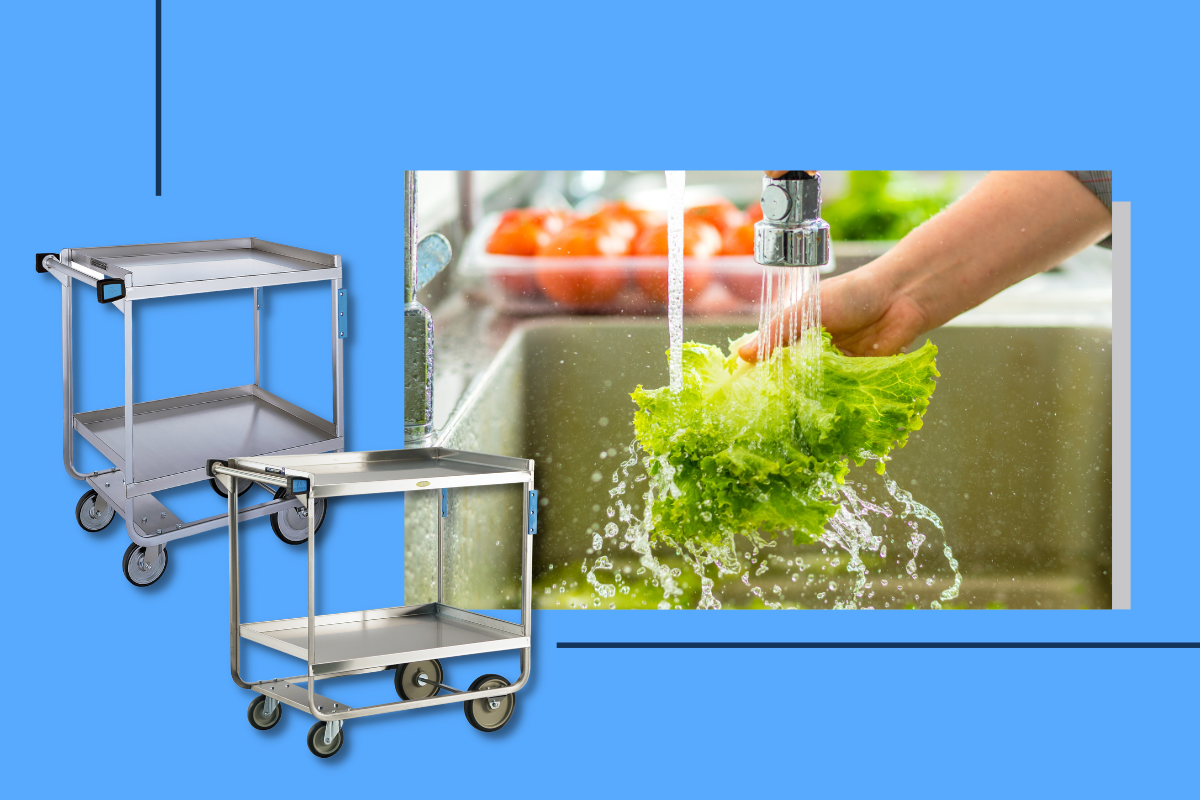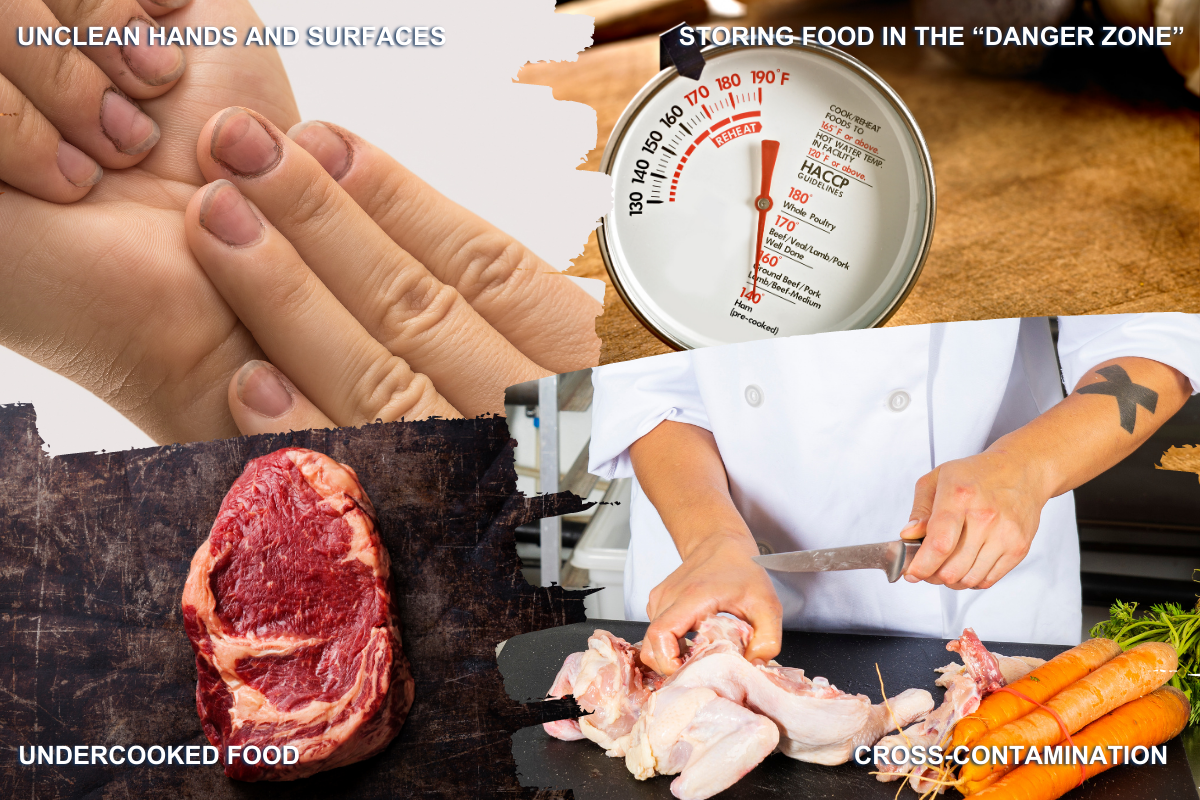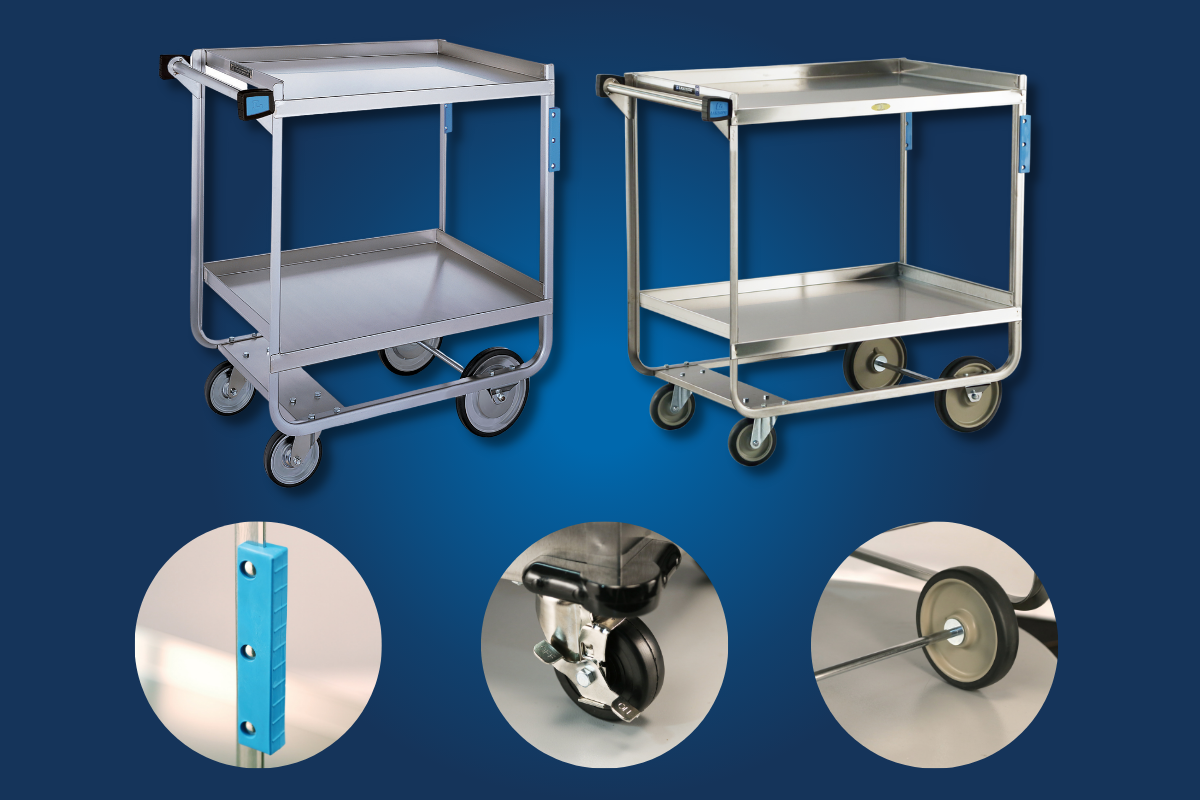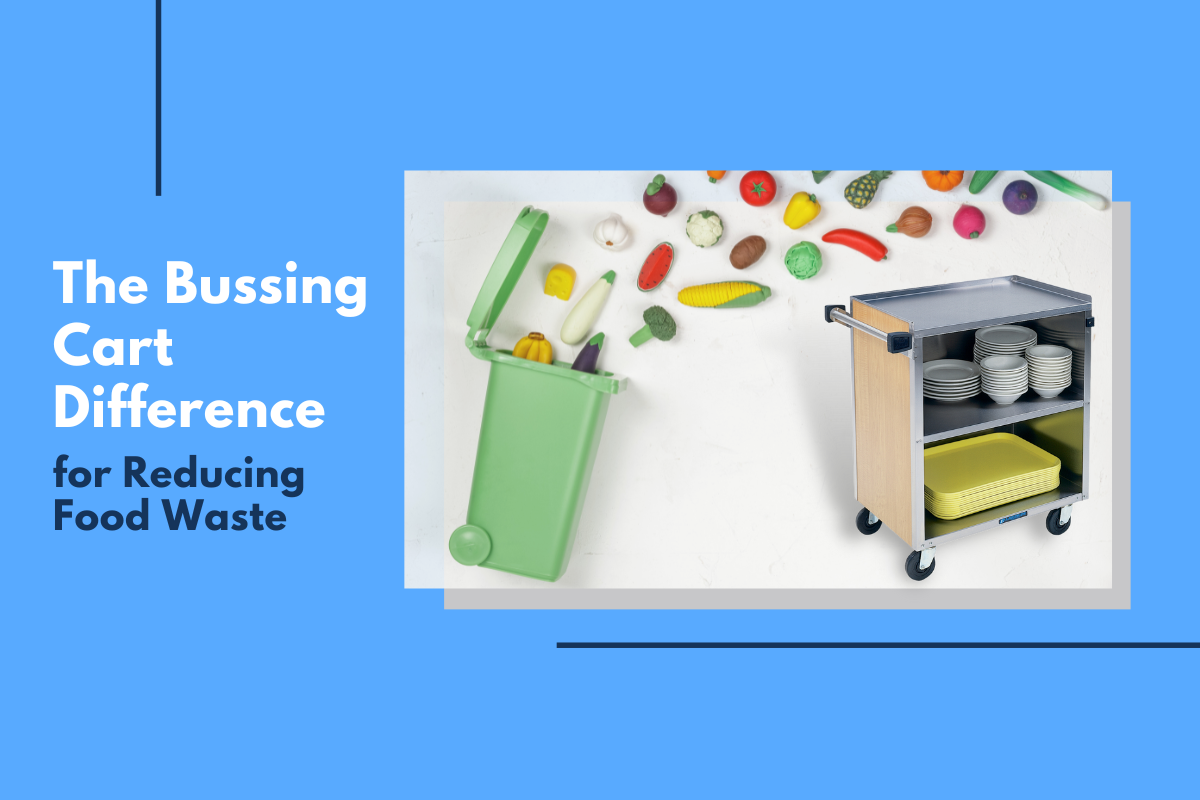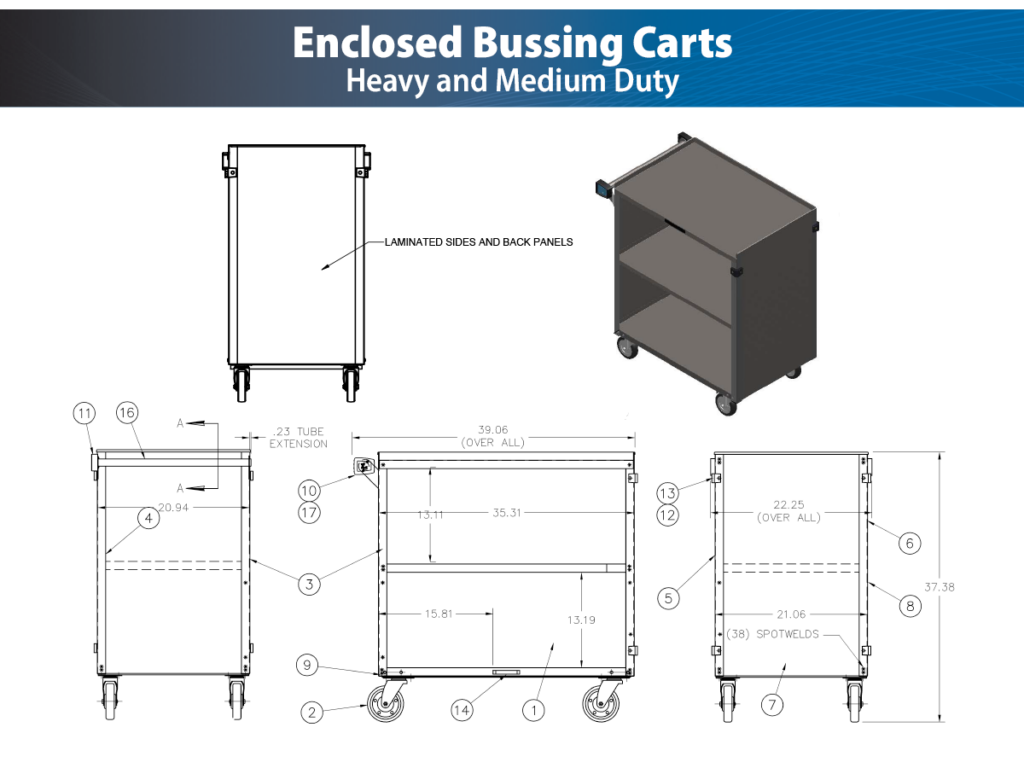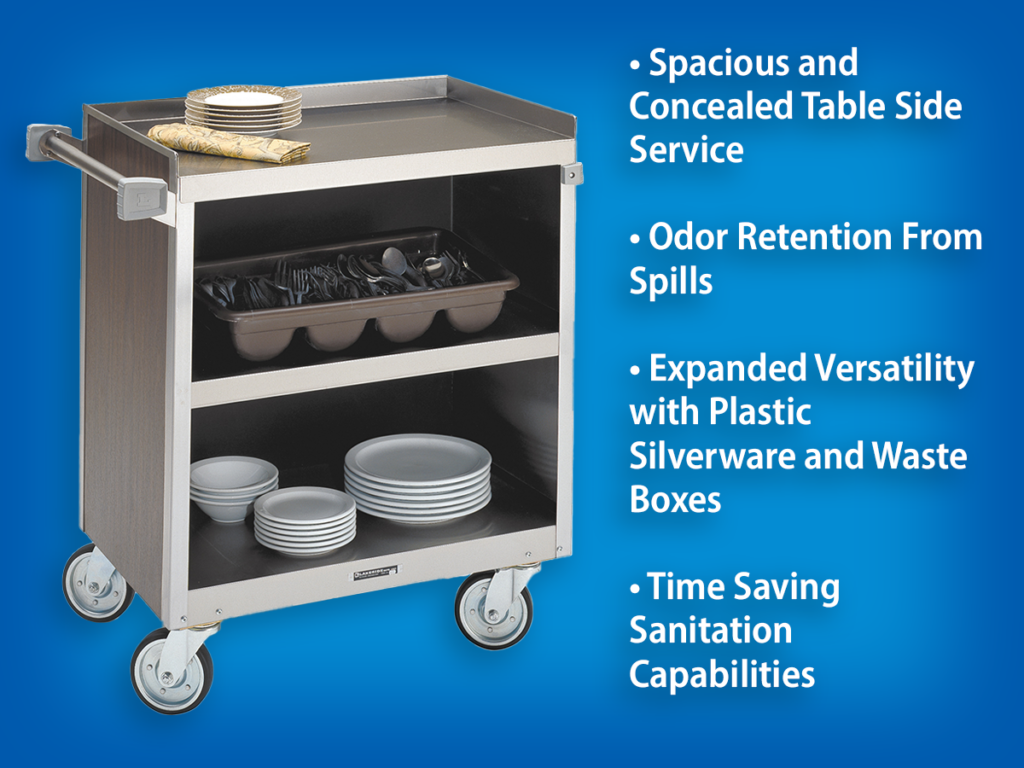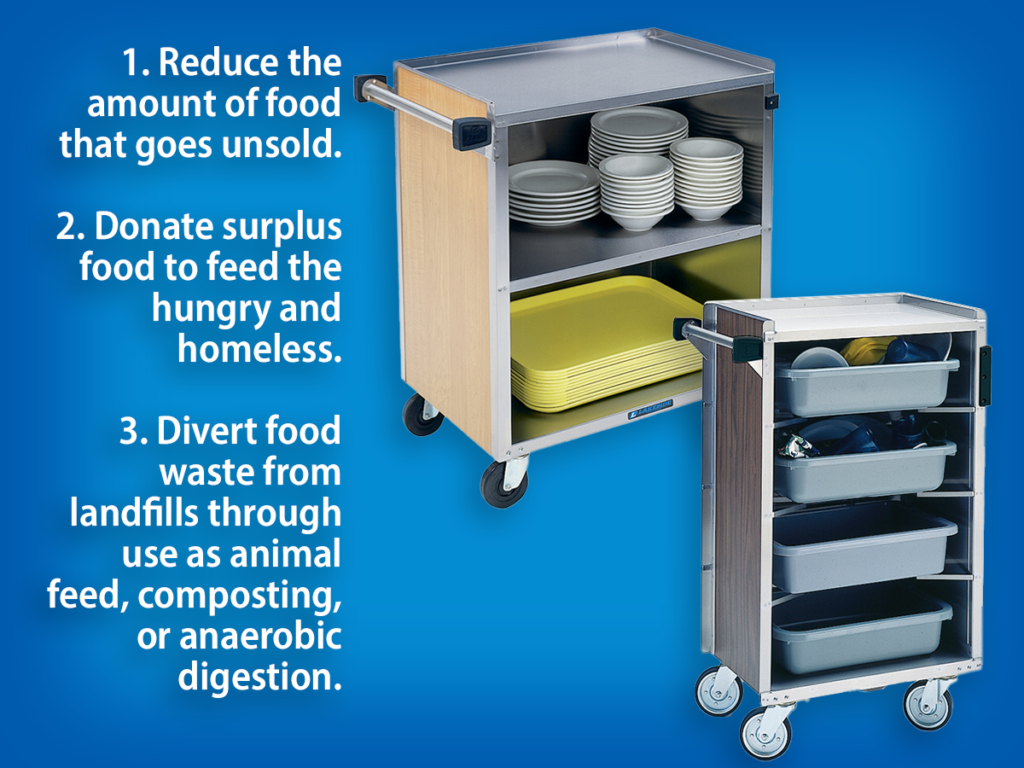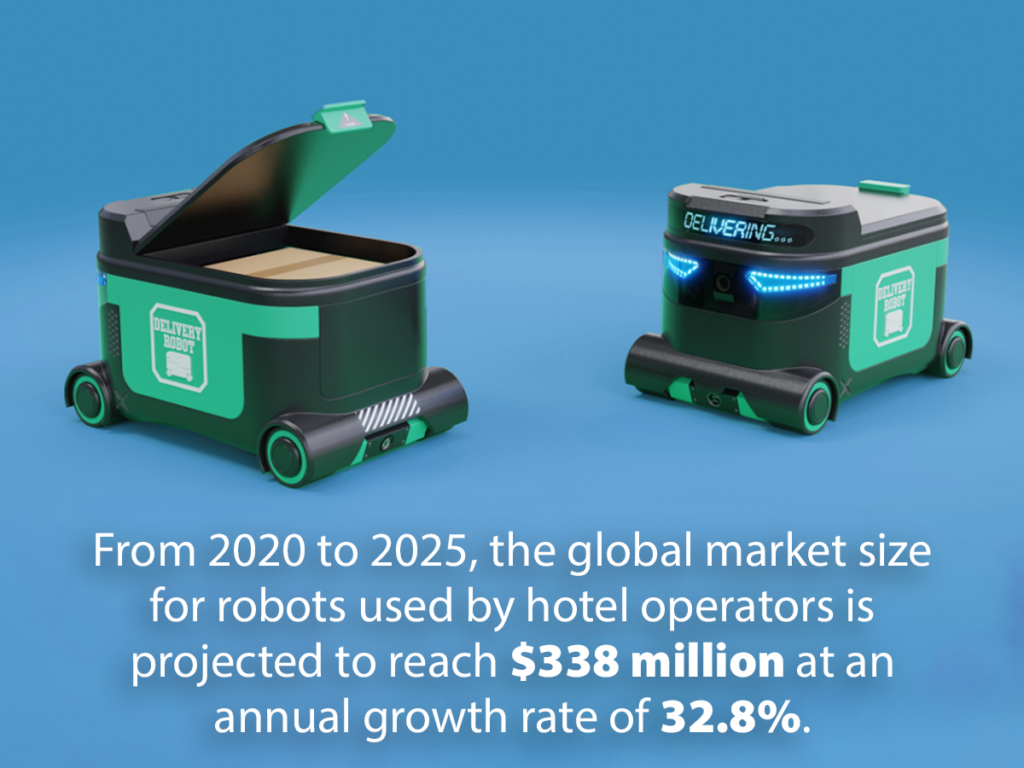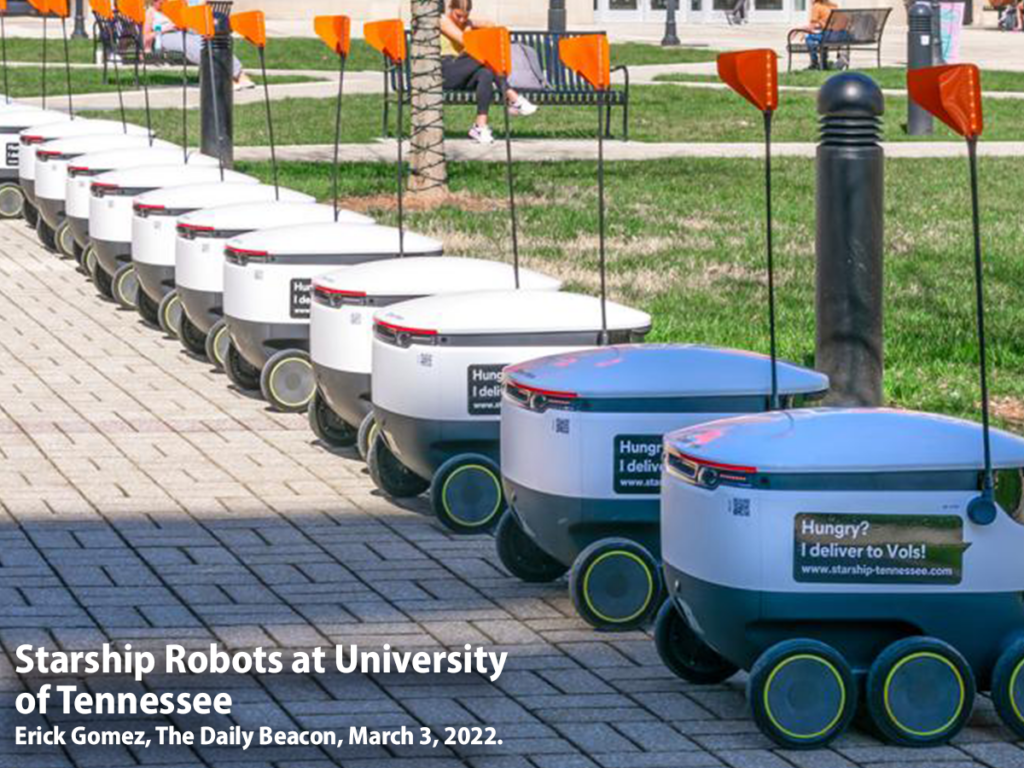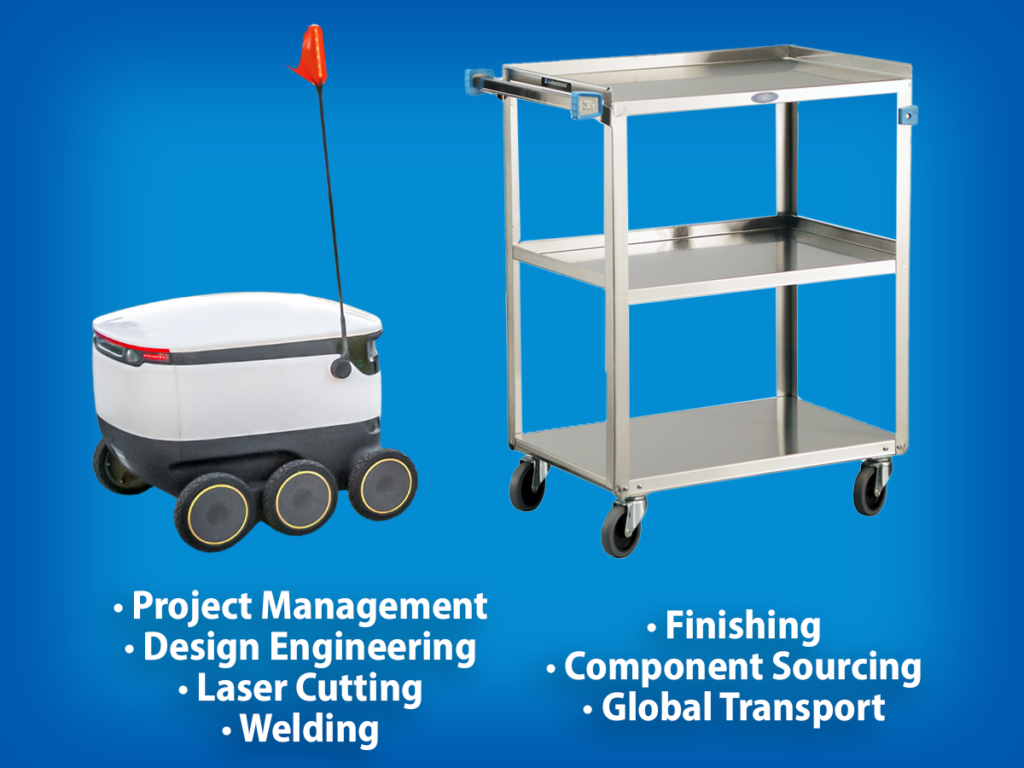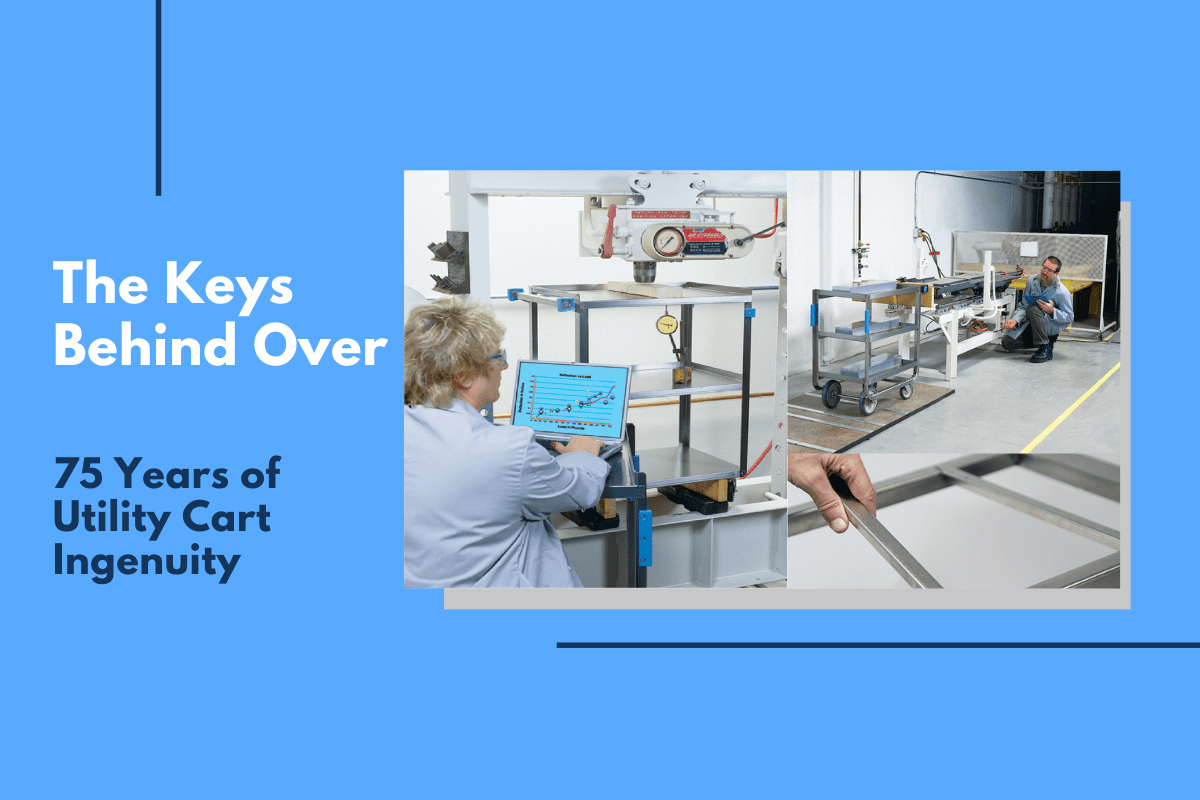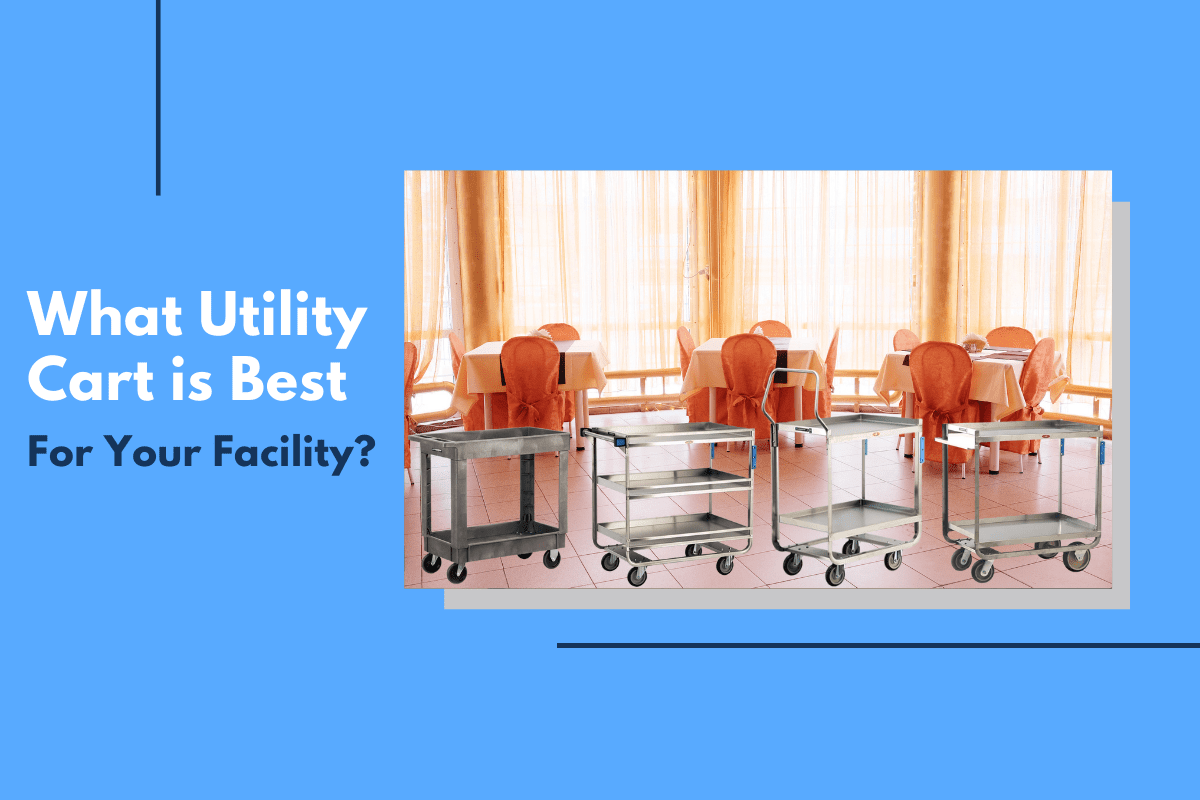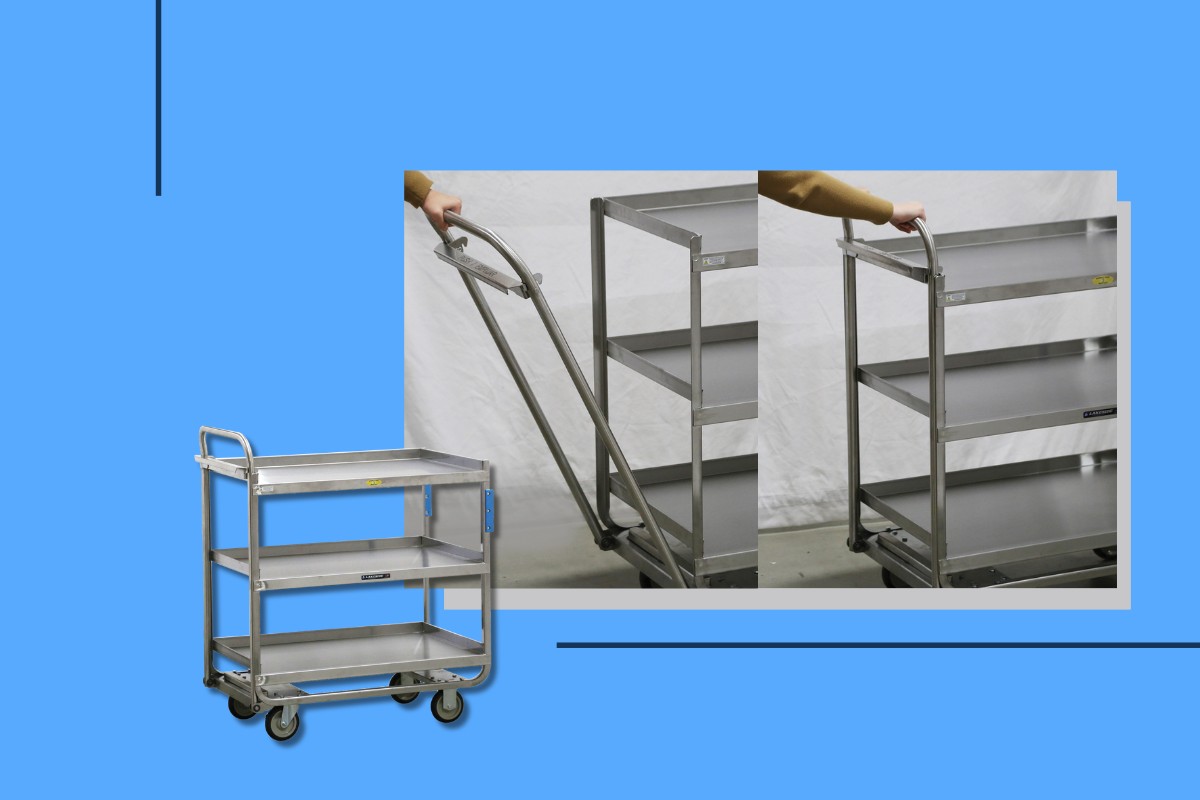
Imagine if there was a utility cart that could easily transport heavy-duty loads with both pushing and pulling functionalities. Well, Lakeside recently introduced their Push-Pull Utility Cart that does just that! This utility push cart is ready to use right out of the box and has a convenient swing-out handle that easily converts from push to pull. Plus, it has smart design features like heads-up ergonomics for a wider view and ankle protection. In today's blog post, we'll briefly walk foodservice operators through how to use this sustainable cart, including its optional on-board hitch bar system for towing multiple Lakeside Stainless Steel Utility Carts at once. Ready to push and pull? Let’s get started!
Converting From Push to Pull On the Fly
To Pull…
The Lakeside Push-Pull Utility Cart is designed with a swing-out handle that can quickly convert from push to pull mode instantly. To use it, a foodservice professional will need to simply press down on the handle’s integrated latch to unlock the swing-out feature, freeing it from the hinged handle locks. With the swing-out handle unlocked, the operator can now begin pulling the cart to their desired destination with ease.
To Push…
But what if an operator needs to convert the cart back to pushing? It’s a breeze. They will need to push the swing-out handle back into the integrated latch where it started. A click will be heard when it locks back into place. Now, an operator can navigate the cart around tight corners, maneuver around furnishings, and cover long distances by pushing the cart.
This handle design makes it easy for foodservice operators to switch from push to pull mode without the need for any tools. It’s that versatile and simple!
Experiencing Heads Up Ergonomics For Wider View
Have you ever seen a foodservice operator pushing a utility cart full of boxes and thought they were playing a game of bumper carts? It’s frustrating and even dangerous to say the least. That’s why the Lakeside Push-Pull Utility Cart is a game-changer in the foodservice industry.
With its heads-up ergonomics design, a foodservice professional can finally see clearly ahead when navigating through even the tightest spaces. No more knocking over stacks of boxes or bumping into hidden obstacles in the back-of-the-house.
Plus this stainless steel push cart’s ergonomic swing-out handle design provides maximum comfort while reducing strain on an operator’s hands and wrists.
Avoiding Contact With Ankles
Every foodservice professional has been there, pulling a utility cart that just won’t cooperate. It feels like every step is a struggle, and to top it off, an operator will usually unintentionally keep bumping the thing into their ankles.
Ouch, right? Well, the Lakeside Push-Pull Utility Cart has those very same foodservice professional’s backs (or, well, their ankles). This cart’s durable design ensures there’s no painful contact between an operator’s feet and the cart’s edge. It’s like the pulling cart is saying, “Hey there buddy, I don’t want to hurt you!”
Plus, the push handle accommodates a wide range of user heights and stride lengths to keep it far away from an operator’s feet when they’re in pulling mode. Safety first they say, especially when pulling heavy-duty loads up to 700-Lb.!
Towing Multiple Carts With Optional On-Board Hitch Bar System
Picture this: You’re a busy foodservice operator trying to get everything done efficiently. You’ve got heavy-duty boxes of supplies and equipment, but only one cart to haul it all. If only there was a faster way to haul more…
That’s where the optional on-board hitch bar system available for the Lakeside Push-Pull Utility Cart comes into play. The hitch bar is located on the cart’s bottom shelf, neatly tucked away underneath the swing-out handle and can connect frame crossmembers of multiple Lakeside Stainless Steel Utility Carts together when an operator needs to hook up another cart.
To connect two Lakeside Stainless Steel Utility Carts together, all an operator has to do is turn the hitch bar on the first cart so it’s perpendicular to both carts’ frame crossmembers. Then, they will simply need to attach the end of the hitch bar to the hole in the other cart’s frame crossmember. It’s as easy as that!
This is a versatile and sustainable option for foodservice professionals that need to transport a lot of items quickly and easily. Imagine how much more an operator can get done by pulling multiple carts full of supplies at the same time!
Staying Out Front With the Lakeside Push-Pull Utility Cart
The Lakeside Push-Pull Utility Cart proves to be an invaluable multi-functional resource for foodservice operators who need to stay at the front in the back-of-the-house. Its versatility allows it to be used as a push or pull cart in seconds, while its ergonomically designed handle provides a heads up view. Moreover, its hitch bar system is perfect for multiple carts being towed at once, allowing foodservice professionals to get the job done quickly and efficiently. So don't let an operator wait, stay out front with the Lakeside Push-Pull Utility Cart!

